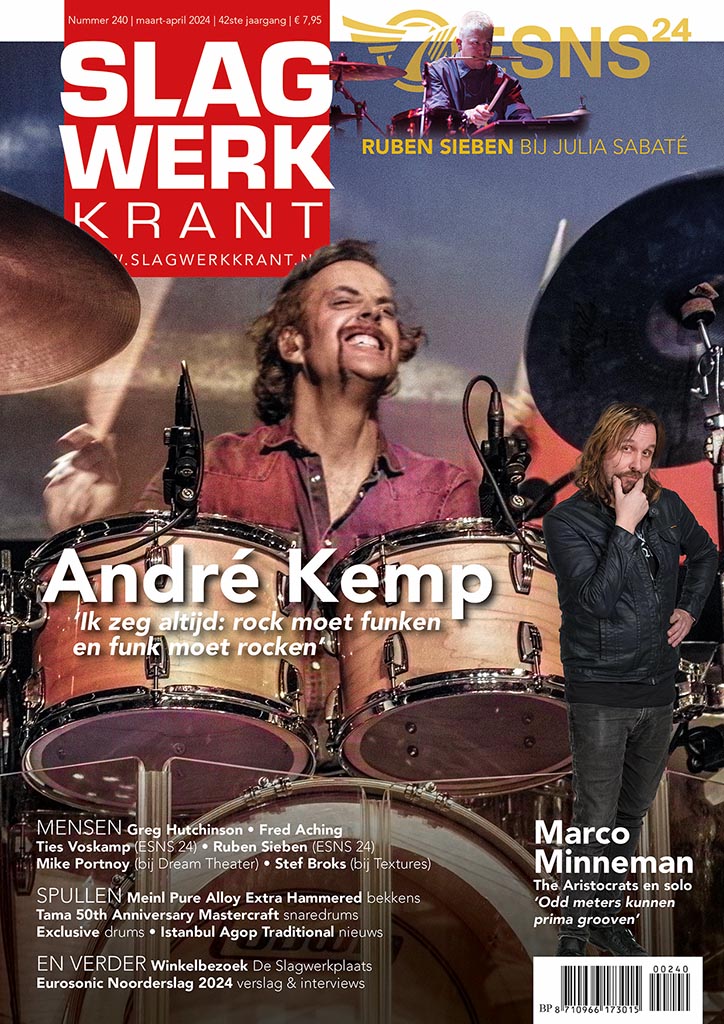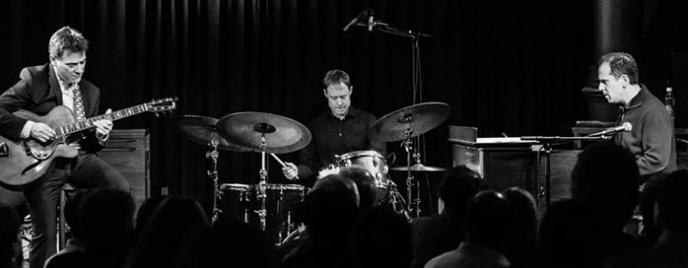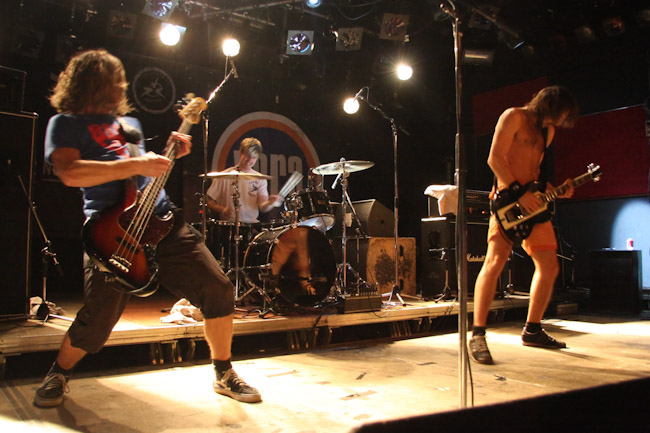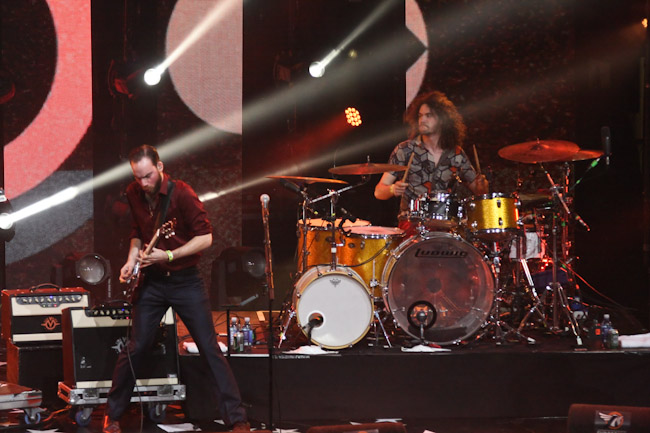Sallaberry about his e-rec
On Stage 19-10-2005 14:23
Nowadays it is a common thing to do in the music industry: send your music to a drummer and let him or her record the drum tracks at home in his own studio. Much cheaper with less of stress of organization. Drummers like Kenny Aronoff and Dave Weckl do it for a couple of years now for many great artists. Sallaberry from Brazil produced his album the other way around: he provided the drum tracks for 22 musicians and let them build the song around them. A unique concept with a unique result.
What is it that you call 'e-rec'?
I thought about producing a solo work for some time. However, I have always been aware of the complexity involved in producing such a work the way I would like, from choosing musicians with available time to create a repertoire, to the beginning of the production itself. I contacted a few friends back in 2002, inviting them for the CD production, but unfortunately all of them were involved in other works. Noticing that the moment did not seem favorable to start the production, I began recording a few ideas, with the intention of using them in my future CD. A couple months later I ended up with about 30 songs – but just the rhythm parts, as I do not play any other instrument. It was then that it occurred to me to start the recording in a reverse way, from the end to the beginning, which is, contacting some musicians by e-mail, suggesting them to develop the theme from the drums part. I was aware of the hardships ahead of me, since it is not a simple task to make a composition upon a rhythm part. Even then, since they accepted my invitation, I began sending the drum lines via e-mail, in MP3 format, and things began to happen.
So you ended up opting for this method as an alternative?
Exactly. Since I could not envision a way out to put the musicians together for rehersals, I thought that they might be able to use the drum lines sent as a basis to make their compositions in their own home studios, without troubling their respective ongoing projects. As if this was not enough, I also noticed that this method would allow me to contact my friends wherever they were – as long as they had a home studio – because the “distance” factor would be out of the equation, thanks to the internet. In the times we are living, time is a really precious commodity for everyone. “E-Recording” allowed everyone involved to work in a calm and relaxed way.
How did you organise all this?
Not everything for this album could be done via internet. Many do not yet have a high speed internet connection, so in some cases I used data and audio CD's to send the music information. The way it worked is basically this: after accepting my invitation, a musician would receive an MP3 file with the drums recording. The receiving musician would then develop his idea, returning a fresh MP3 to me, including the drum lines initially sent. The theme would be ready by then for some of the songs which were duos. For other songs, with 4, 5 or 6 different musicians, the process would be the same for every one of them. If some musician did not have access to MP3, the material would be sent in an audio CD.
This demanded a lot of organization, in order to control all the steps of the process. I set up a spreadsheet with the songs, including deadlines to mail CDs, collect materials, redirect audio to other musicians, and the like. As for mail, for instance, I would ship the CDs on Saturday, so that the controls could be updated in the beginning of the following week.
Who are the guest musicians that appear on SambaSong?
They are all my friends, except in those situations that involved the friends of my friends, which ended up becoming my friends as well. The total mounts up to 22 musicians, including Airto Moreira, CoopDeVille and Marcos Romera. The latter, for instance, became the co-producer, as he has been totally receptive to the idea. My main motivation since the beginning of this work was the possibility of contacting friends living in other cities, states of countries. I have friends in New York, Los Angeles and Rio de Janeiro, so as soon as I had opted for this kind of production it occurred to me “why not to invite them? After all, I was no longer bound by any limit of distance!” It was fascinating! In the past, it would have been necessary to ship 2 inches tapes or even ADAT tapes, so that they could rent a studio and record their parts. This would have hindered such a production entirely, as the shipping costs and studio rentals would be way beyond my reach.
So the limitation for E-rec would lie in the speed of the internet connection?
As soon as I started to use the e-rec method, I also started to research efficient – and available – ways to move data along. Digidelivery, for instance, was not available two years ago, when I started the project. There are more resources today to make e-rec viable. Even then, the ideal situation will be to have a larger data transfer capacity via e-mail. This will allow any musician or producer to put forward several different projects, anywhere in the world.
Focussing once again on the E-rec, what are your final comments?
My work, called SambaSong & Friends, is finally completed, and I am fully satisfied with the outcome, mainly because it is the fruit of a way I figured out due to the difficulties that I faced. What I call e-rec today is just a still rudimentary way of musical production. It is a process intended to make musical production involving digital recording and internet resources viable. What is important is the possibility of new alternatives arising from these resources. As I said, I used this in a experimental way, although with good results. The concept of e-rec is that musicians with access to the internet and equipped with home studios be able to take part in a specific musical production, without having to be physically in the same space, in the same studio. It is a very exciting possibility to be able to record without leaving your home. This expands the possibilities of multiplying his/her working options, be it recording CDs, jingles, tracks, etc. Have you ever wondered about the possibility of working with musicians from Japan, New York, Rio de Janeiro and São Paulo via web? Everyone recording together, despite being each one in their own home studios? If today we are able to exchange e-mails with them, most certainly we will be recording with them tomorrow, and the results will surely be surprising.
To hear samples of SambaSong, click here for the release page of the album. Via Sallaberry's web site you'll find ways of how to order the album.




